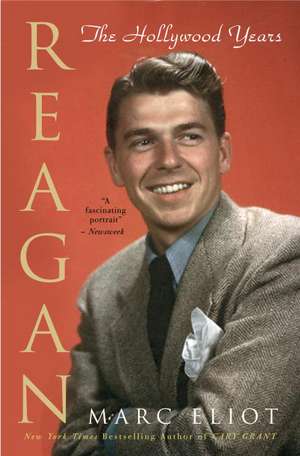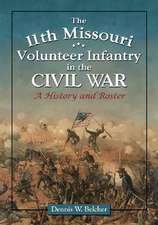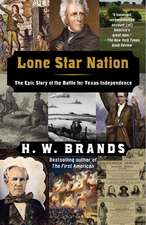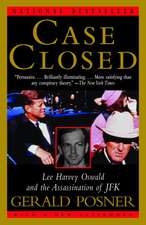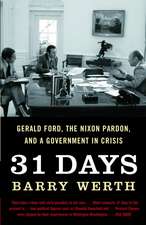Reagan: The Hollywood Years
Autor Marc Elioten Limba Engleză Paperback – 31 aug 2009
Ronald Reagan was one of the most powerful and popular American presidents. The key to understanding his political success and the remarkable likability and effortless charisma that made it possible lies embedded in his early years as a Hollywood movie star.
Using never-before-published interviews, documents, and other materials, acclaimed writer and biographer Marc Eliot sheds new light on Reagan’s film and television work opposite some of the most talented women of the time; his starlet-strewn bachelor days; his tumultuous first marriage to Jane Wyman and his career-making second marriage to Nancy Davis; his controversial eight years as the president of the Screen Actors Guild; his place in the “Irish Mafia” alongside Pat O’Brien, James Cagney, Spencer Tracy, and Errol Flynn; and his friendships with Jimmy Stewart and William Holden, as well as with super-agent Lew Wasserman, who was instrumental in developing the persona that would prove essential to Reagan’s future as a world leader.
Set against the glamorous and often combative background of Hollywood’s Golden Age, Eliot’s biography provides a nuanced examination of the man and uncovers the startling origins of the legend.
“A fresh look . . . [at] the genesis of Reagan’s later public persona.”
—New York Times
“Film critic and historian Marc Eliot has dug up even more about young sportscaster ‘Dutch’ Reagan, his journey west to Hollywood, his B-movie career . . . his relationship with super-agent Lew Wasserman, and his rocky marriage to his first wife, actresss Jane Wyman.”
—USA Today
| Toate formatele și edițiile | Preț | Express |
|---|---|---|
| Paperback (2) | 145.68 lei 3-5 săpt. | |
| Three Rivers Press (CA) – 31 aug 2009 | 145.68 lei 3-5 săpt. | |
| Anchor Books – 19 mai 2016 | 152.49 lei 3-5 săpt. | +43.90 lei 7-11 zile |
Preț: 145.68 lei
Nou
Puncte Express: 219
Preț estimativ în valută:
27.88€ • 29.24$ • 23.21£
27.88€ • 29.24$ • 23.21£
Carte disponibilă
Livrare economică 11-25 martie
Preluare comenzi: 021 569.72.76
Specificații
ISBN-13: 9780307405135
ISBN-10: 0307405133
Pagini: 375
Ilustrații: 16-PAGE B&W PHOTO INSERT, 15 B&W PHOTOS THROUGHOUT
Dimensiuni: 155 x 233 x 22 mm
Greutate: 0.42 kg
Editura: Three Rivers Press (CA)
ISBN-10: 0307405133
Pagini: 375
Ilustrații: 16-PAGE B&W PHOTO INSERT, 15 B&W PHOTOS THROUGHOUT
Dimensiuni: 155 x 233 x 22 mm
Greutate: 0.42 kg
Editura: Three Rivers Press (CA)
Notă biografică
MARC ELIOT is the New York Times bestselling author of more than a dozen books on popular culture, among them the highly acclaimed biographies of Cary Grant and Jimmy Stewart and the award-winning Walt Disney: Hollywood’s Dark Prince. His most recent book is American Rebel: The Life of Clint Eastwood.
Extras
Chapter One
The Next Voice
You Hear
At Eureka, I’d pick up a broomstick, pretend it was a microphone, and do a locker-?room interview with some of my fraternity brothers to get some laughs.
—Ronald Reagan
It was 1911 and Howard Taft was in the third year of his one-term presidency, a tenure of office so uneventful that on his deathbed he insisted he couldn’t remember a single thing about it. In China and Mexico, revolution was in the air. In New York City, a fire in the Triangle shirtwaist factory killed nearly 150 workers and sparked nationwide labor reform. In Los Angeles, the immensely popular novelty of moving pictures was about to be transformed into a full-service industry by the merger of two independent film companies, which became Paramount Pictures, Hollywood’s first “major” studio. And on February 6, in Tampico, Illinois, the heart of Chicago farm country, John Edward “Jack” Reagan (pronounced RAY-gun), first-generation Black Irish, and his wife, Nelle, became the proud parents of their second child, a baby boy they named Ronald Wilson.
Like his two-year-old brother, Neil (nicknamed “Moon” for his round face), baby Ronald was born in the cold-water flat the family lived in over a shallow bank on Main Street. There was no doctor available to make house calls for such poor folk as these, but Jack had managed to secure the services of a midwife, who brought the chubby infant into the world with a good old-fashioned smack on the bottom, which set baby Ronnie onto a crying jag that seemed to Jack would never end. Exasperated (and filled with too much booze), Jack declared later that night to the whole world but to no one in particular, “For such a little bit of a fat Dutchman, he makes a hell of a lot of noise!”
The crying eventually stopped, but the nickname stuck. From as early as he could remember, Ronald, whose given name was changed shortly after his birth (no one quite remembers why, but the certificate says Donald) was called Dutch. Jack, like his son, always preferred the nickname because, the father insisted, it made him sound more rugged than did the girlish “Ronnie” that Nelle had chosen.
At the time, the tallest building in Tampico was the grain elevator dominating the single commercial main street between the depots of two railroad lines. Jack worked in the general store across from the elevator. His knowledge covered all the departments, not unusual in these Midwest one-outpost towns, but he was especially adept at selling shoes, and his interest in them bordered on the obsessive; he spent his free nights analyzing the bones of feet and filling out forms requesting correspondence courses on how to sell the right shoes to fit them.
Unfortunately, his interest in and devotion to his work not only didn’t help him get ahead, but after more than two years it also wasn’t enough to keep him from losing his job. The problem wasn’t ability; he had a lot of that, along with a good personality, a natural glibness, and an appreciation of when to tell a timely joke to move along a sale. It was, rather, what Ronald Reagan would later describe as the demon in the bottle that brought Jack down. Jack was a fall-down drunk who worshipped at the feet of Irish whiskey.
His wife, Nelle, on the other hand, was a straight-back Protestant, a member in good standing of the Tampico Church of Christ. Born in Illinois from a Scots-English ancestry, she’d met Jack in Fulton and fell fast and hard for the tall Irishman, accepting his proposal of marriage without hesitation despite the fact that he was Catholic. At least, she told herself, he wasn’t a “serious” Catholic. He hardly attended Mass and although they were married in the Catholic church in Fulton, she had made it clear to him that their children would be raised Protestant. Jack had no objections.
Now, with two small children to raise—Neil, five years old, and Ronald, three—in the light of his latest firing, Jack, with his family, had to move far enough away to escape the stigma of what Nelle described as their disgraceful circumstances so that Jack could start over again. They moved first, in 1913, to the South Side of Chicago, where Jack worked as a shoe salesman at Marshall Field’s department store, then they moved in 1915 to Galesburg, then in 1918 to Monmouth, where he got a job at E. B. Colwell’s. They returned briefly in 1919 to Tampico, where Jack managed the H. C. Pitney General Store, a place he’d once sold shoes. Early in 1920, the family moved again, this time to Dixon, a real metropolis ninety-four miles outside of Chicago and situated along the Rock River. Nelle, determined the family would remain in Dixon for the sake of the children’s having a stable schooling, insisted Jack lease a three-bedroom house on South Hennepin Avenue. He soon found a job at the Fashion Boot Shop, where for many years he would tell one and all, perhaps even Nelle, that he was a partner, when in truth he was only a manager with a modest override on the percentage of sales he generated.
Although the Reagan family finances remained meager—Jack and Nelle would not own a home until their son became a movie star and bought one for them—the instability of their lifestyle seemed to have had little outward effect on Dutch. Perhaps he was too young to feel the negative social aspects—the lack of friends, the discontinuity of schooling—of constantly being uprooted. In his memoirs, Reagan remembered the family’s arrival in Dixon as the first “home to me. All of us have a place we go back to: Dixon is that place for me.”
Dutch was nine when the family moved to Dixon. By then he had formulated and developed two essential root characteristics of his personality. From his father he learned the expressive charms of a storyteller, including the value of a smile along with the ingratiating flip of his head, slightly back and to the side; a pat on the back; and a tight and warm shake of a hand. (He’d also witnessed and been horrified by his father’s alcoholic stupors, which always left him sprawled out unconscious on the living room floor.) From his mother he learned that a lack of outward expressions of affection did not necessarily mean an absence of love.
And from both of them he learned about tolerance and loyalty. His parents stayed together through poverty, endless and often shiftless moves, and public humiliation due to his father’s inability to control his drinking. As young Reagan observed, the bond of love between his parents could not be broken, no matter what. According to his mother, that was the Christian way, and the Christian way always led to Jack’s repentance. Even if his promises to give up the bottle never lasted, his well-intentioned attempts made all the difference in the world to Nelle. And it left Dutch with a lifelong aversion to drinking.
One of the first things Dutch did in Dixon was to become active in his mother’s newly chosen house of worship, the First Christian Church. Its pastor, Minister Ben Cleaver, quickly became an idealized father figure to him, a simpler and more sober version of the real Jack. For decidedly nonpaternal reasons, Dutch also became interested in the minister’s daughter. Margaret “Mugs” Cleaver’s face resembled that of her handsome father; she was pretty, with a strong chin and a sharp, slightly upturned nose. Her eyes were set wide apart and, like the minister, she always wore a bright smile on her face. Her brunette hair was cut short in the curl-wave style popular with young girls during the 1920s. If Margaret’s physical beauty reminded him of her “perfect” dad, her personality echoed the ship-righting strength and balance of his mother. Like Nelle, Margaret was never at a loss for words—and was very much the aggressor, the organizer, the finger-snapping miniauthoritarian. Her stabilizing if domineering manner appealed to Reagan as much as her good looks and quick wit.
All of these qualities were sharp as an arrow’s tip for Reagan, and from the first time he saw her, he fell heart-piercingly, irresistibly in young love. After a few weeks of getting to know each other, they began dating, which allowed Reagan, in an adolescent fashion, to “remake” his father into a better man by casting himself in the role and playing it better than Jack ever could. Margaret was the perfect mother/girlfriend. For Reagan, even at this early age, role-playing was as good as, if not better than, reality.
Dutch and Mugs were soon going steady in that chaste mock-marriage style so in vogue with preteens of the day (hand-holding, movies, popcorn, ice-cream sodas, walks in the moonlight). Before long he was spending more time at the minister’s home than he was at his own. Years later, Margaret’s sister Helen would recall that “[Reagan] was often in our home and felt the influence of Father’s guidance during those formative years.” Mrs. Cleaver, a woman wrapped in Christian tradition and a perpetual apron, happily welcomed Dutch’s presence in the household. Like her husband, she considered him the right kind of boy for her daughter to be friends with.
The arrival of Mugs into young Ronald’s life ?couldn’t have pleased Nelle more, as she, too, had become a familiar figure in the Cleaver home, often consulting with and taking the advice of the minister regarding her lesson books for Sunday-school teachings, her role in the Women’s Missionary Society, and her regular dramatic readings in church.
Cleaver, a warm, friendly man with middle-of-the-road politics (that made him something of a liberal in Dixon), was also a strong supporter of the Eighteenth Amendment, the passage of which ushered in the era of Prohibition. Many in the congregation who personally knew the Reagans took Cleaver’s incessant support of the passage of the amendment as an indirect but pointed criticism of Jack, who was already distrusted by many of Dixon’s prominent Protestants for his insistence on remaining a practicing Catholic.
Rumors of a divorce were whispered like dirty words among Nelle’s friends at the church. If she heard them, she didn’t care; even if she had to crack the whip occasionally, Jack would always be her man. They were in love and that was the beginning, middle, and end of it. However, the tensions within such a close-knit religious and social community tended to agitate Dutch, who continued to feel embarrassment at his father’s inability to control his drinking and who believed the other (Protestant) kids at school poked fun at him because of it. Being the object of their mean-spirited jokes turned him away from after-school activities, Sunday school, and eventually church itself. He much preferred his mother’s regular nightly preaching to him and Neil from her Hostess Reference Book of enlightened social skills.
But most of all he found comfort in the dark, more secular world of the movies. Every Saturday morning, by himself, Reagan would go to the local Family Theater, where the “kiddie” programs of serials, comedies, cartoons, and Westerns transported him out of his reality and into a world of silver-screen romance and adventure. He especially loved the “cowboys” Tom Mix and William S. Hart, two actors among the biggest movie stars of their day (neither of whom were actual cowboys, a Hollywood tradition that continued with Roy Rogers and Gene Autry, and later on, John Wayne and Ronald Reagan himself). On-screen, Mix and Hart were two-fisted tough, knew right from wrong, always played the heroes, and always defeated the bad guys. They loved the land upon which they rode their white horses, they wore tall if rather impractical hats, and they carried silver six-guns. And with courtly grace and perfect manners they defended the honor of the town’s beautiful, helpless, angellike women, more often than not the daughters of one of the fallen sheriffs or marshals, occasionally the “good” daughter of one of the “bad” guys. It was at the movies where Reagan learned all the “enlightened social skills” he would ever need. He would later remember those Saturday mornings as among the happiest days of his youth.
However, Dutch’s incessant love for movies sometimes clashed with his duties as a boyfriend (as Margaret put it), especially when it came to church activities. Mugs strongly disapproved of the fact that her boyfriend was spending far more of his weekend at the Family Theater than at church. She also didn’t appreciate what she thought of as his clumsy lack of self-control whenever they were alone; his groping at her was something else he must have learned from those movies! Indeed, young Ronald’s hormones were raging, and as any boy might want to, he tried to share these new and surging feelings with his girlfriend, who slammed shut these attempts with as much authority as her father did the New Testament at the end of one of his sermons.
Mugs also did not think much of Dutch’s new habit of occasionally taking a drink, even though it was never anything stronger than a beer, and would let him know in her typical authoritarian manner that she was not going to tolerate it. This continual criticism of his behavior somehow only made him feel closer to her and reinforced his belief not only that she knew better about these things than he did, but that she was the picture-perfect girlfriend for him. In his first memoir, Reagan wrote that at the time he was “sure” Margaret was one day going to be his wife.
Ronald proved a good student during his years at North Dixon High School, where he tried to keep his grades above average so he could get into college, something he was determined to do. His only apparent shortcomings were, in fact, literal. At the age of thirteen, he was unusually small for his age. He stood all of five foot three, making him ineligible to play on any of the freshman teams, something every Dixon boy dreamed of doing. And his height wasn’t his only handicap. After experiencing blurred vision on several occasions, an eye exam revealed what he already feared, that was severely nearsighted and would have to wear glasses at all times except when reading. His vision and size seemed to rule out any chance he might have had at playing football, the sport he loved most. To him, football was a lot like Westerns: simple scenarios of good guy vs. bad guy, physical strength, and single-minded focus—the ultimate reward for the winners being the respect from the other guys (townspeople) and adoration from the girls (rescued heroines-in-distress). From the sidelines, he watched, through his spectacles, the other boys play, but he imagined that he was the real hero of the game—the great quarterback who threw the winning pass, saved the game, saved the day, saved the season, saved the world!
From the Hardcover edition.
The Next Voice
You Hear
At Eureka, I’d pick up a broomstick, pretend it was a microphone, and do a locker-?room interview with some of my fraternity brothers to get some laughs.
—Ronald Reagan
It was 1911 and Howard Taft was in the third year of his one-term presidency, a tenure of office so uneventful that on his deathbed he insisted he couldn’t remember a single thing about it. In China and Mexico, revolution was in the air. In New York City, a fire in the Triangle shirtwaist factory killed nearly 150 workers and sparked nationwide labor reform. In Los Angeles, the immensely popular novelty of moving pictures was about to be transformed into a full-service industry by the merger of two independent film companies, which became Paramount Pictures, Hollywood’s first “major” studio. And on February 6, in Tampico, Illinois, the heart of Chicago farm country, John Edward “Jack” Reagan (pronounced RAY-gun), first-generation Black Irish, and his wife, Nelle, became the proud parents of their second child, a baby boy they named Ronald Wilson.
Like his two-year-old brother, Neil (nicknamed “Moon” for his round face), baby Ronald was born in the cold-water flat the family lived in over a shallow bank on Main Street. There was no doctor available to make house calls for such poor folk as these, but Jack had managed to secure the services of a midwife, who brought the chubby infant into the world with a good old-fashioned smack on the bottom, which set baby Ronnie onto a crying jag that seemed to Jack would never end. Exasperated (and filled with too much booze), Jack declared later that night to the whole world but to no one in particular, “For such a little bit of a fat Dutchman, he makes a hell of a lot of noise!”
The crying eventually stopped, but the nickname stuck. From as early as he could remember, Ronald, whose given name was changed shortly after his birth (no one quite remembers why, but the certificate says Donald) was called Dutch. Jack, like his son, always preferred the nickname because, the father insisted, it made him sound more rugged than did the girlish “Ronnie” that Nelle had chosen.
At the time, the tallest building in Tampico was the grain elevator dominating the single commercial main street between the depots of two railroad lines. Jack worked in the general store across from the elevator. His knowledge covered all the departments, not unusual in these Midwest one-outpost towns, but he was especially adept at selling shoes, and his interest in them bordered on the obsessive; he spent his free nights analyzing the bones of feet and filling out forms requesting correspondence courses on how to sell the right shoes to fit them.
Unfortunately, his interest in and devotion to his work not only didn’t help him get ahead, but after more than two years it also wasn’t enough to keep him from losing his job. The problem wasn’t ability; he had a lot of that, along with a good personality, a natural glibness, and an appreciation of when to tell a timely joke to move along a sale. It was, rather, what Ronald Reagan would later describe as the demon in the bottle that brought Jack down. Jack was a fall-down drunk who worshipped at the feet of Irish whiskey.
His wife, Nelle, on the other hand, was a straight-back Protestant, a member in good standing of the Tampico Church of Christ. Born in Illinois from a Scots-English ancestry, she’d met Jack in Fulton and fell fast and hard for the tall Irishman, accepting his proposal of marriage without hesitation despite the fact that he was Catholic. At least, she told herself, he wasn’t a “serious” Catholic. He hardly attended Mass and although they were married in the Catholic church in Fulton, she had made it clear to him that their children would be raised Protestant. Jack had no objections.
Now, with two small children to raise—Neil, five years old, and Ronald, three—in the light of his latest firing, Jack, with his family, had to move far enough away to escape the stigma of what Nelle described as their disgraceful circumstances so that Jack could start over again. They moved first, in 1913, to the South Side of Chicago, where Jack worked as a shoe salesman at Marshall Field’s department store, then they moved in 1915 to Galesburg, then in 1918 to Monmouth, where he got a job at E. B. Colwell’s. They returned briefly in 1919 to Tampico, where Jack managed the H. C. Pitney General Store, a place he’d once sold shoes. Early in 1920, the family moved again, this time to Dixon, a real metropolis ninety-four miles outside of Chicago and situated along the Rock River. Nelle, determined the family would remain in Dixon for the sake of the children’s having a stable schooling, insisted Jack lease a three-bedroom house on South Hennepin Avenue. He soon found a job at the Fashion Boot Shop, where for many years he would tell one and all, perhaps even Nelle, that he was a partner, when in truth he was only a manager with a modest override on the percentage of sales he generated.
Although the Reagan family finances remained meager—Jack and Nelle would not own a home until their son became a movie star and bought one for them—the instability of their lifestyle seemed to have had little outward effect on Dutch. Perhaps he was too young to feel the negative social aspects—the lack of friends, the discontinuity of schooling—of constantly being uprooted. In his memoirs, Reagan remembered the family’s arrival in Dixon as the first “home to me. All of us have a place we go back to: Dixon is that place for me.”
Dutch was nine when the family moved to Dixon. By then he had formulated and developed two essential root characteristics of his personality. From his father he learned the expressive charms of a storyteller, including the value of a smile along with the ingratiating flip of his head, slightly back and to the side; a pat on the back; and a tight and warm shake of a hand. (He’d also witnessed and been horrified by his father’s alcoholic stupors, which always left him sprawled out unconscious on the living room floor.) From his mother he learned that a lack of outward expressions of affection did not necessarily mean an absence of love.
And from both of them he learned about tolerance and loyalty. His parents stayed together through poverty, endless and often shiftless moves, and public humiliation due to his father’s inability to control his drinking. As young Reagan observed, the bond of love between his parents could not be broken, no matter what. According to his mother, that was the Christian way, and the Christian way always led to Jack’s repentance. Even if his promises to give up the bottle never lasted, his well-intentioned attempts made all the difference in the world to Nelle. And it left Dutch with a lifelong aversion to drinking.
One of the first things Dutch did in Dixon was to become active in his mother’s newly chosen house of worship, the First Christian Church. Its pastor, Minister Ben Cleaver, quickly became an idealized father figure to him, a simpler and more sober version of the real Jack. For decidedly nonpaternal reasons, Dutch also became interested in the minister’s daughter. Margaret “Mugs” Cleaver’s face resembled that of her handsome father; she was pretty, with a strong chin and a sharp, slightly upturned nose. Her eyes were set wide apart and, like the minister, she always wore a bright smile on her face. Her brunette hair was cut short in the curl-wave style popular with young girls during the 1920s. If Margaret’s physical beauty reminded him of her “perfect” dad, her personality echoed the ship-righting strength and balance of his mother. Like Nelle, Margaret was never at a loss for words—and was very much the aggressor, the organizer, the finger-snapping miniauthoritarian. Her stabilizing if domineering manner appealed to Reagan as much as her good looks and quick wit.
All of these qualities were sharp as an arrow’s tip for Reagan, and from the first time he saw her, he fell heart-piercingly, irresistibly in young love. After a few weeks of getting to know each other, they began dating, which allowed Reagan, in an adolescent fashion, to “remake” his father into a better man by casting himself in the role and playing it better than Jack ever could. Margaret was the perfect mother/girlfriend. For Reagan, even at this early age, role-playing was as good as, if not better than, reality.
Dutch and Mugs were soon going steady in that chaste mock-marriage style so in vogue with preteens of the day (hand-holding, movies, popcorn, ice-cream sodas, walks in the moonlight). Before long he was spending more time at the minister’s home than he was at his own. Years later, Margaret’s sister Helen would recall that “[Reagan] was often in our home and felt the influence of Father’s guidance during those formative years.” Mrs. Cleaver, a woman wrapped in Christian tradition and a perpetual apron, happily welcomed Dutch’s presence in the household. Like her husband, she considered him the right kind of boy for her daughter to be friends with.
The arrival of Mugs into young Ronald’s life ?couldn’t have pleased Nelle more, as she, too, had become a familiar figure in the Cleaver home, often consulting with and taking the advice of the minister regarding her lesson books for Sunday-school teachings, her role in the Women’s Missionary Society, and her regular dramatic readings in church.
Cleaver, a warm, friendly man with middle-of-the-road politics (that made him something of a liberal in Dixon), was also a strong supporter of the Eighteenth Amendment, the passage of which ushered in the era of Prohibition. Many in the congregation who personally knew the Reagans took Cleaver’s incessant support of the passage of the amendment as an indirect but pointed criticism of Jack, who was already distrusted by many of Dixon’s prominent Protestants for his insistence on remaining a practicing Catholic.
Rumors of a divorce were whispered like dirty words among Nelle’s friends at the church. If she heard them, she didn’t care; even if she had to crack the whip occasionally, Jack would always be her man. They were in love and that was the beginning, middle, and end of it. However, the tensions within such a close-knit religious and social community tended to agitate Dutch, who continued to feel embarrassment at his father’s inability to control his drinking and who believed the other (Protestant) kids at school poked fun at him because of it. Being the object of their mean-spirited jokes turned him away from after-school activities, Sunday school, and eventually church itself. He much preferred his mother’s regular nightly preaching to him and Neil from her Hostess Reference Book of enlightened social skills.
But most of all he found comfort in the dark, more secular world of the movies. Every Saturday morning, by himself, Reagan would go to the local Family Theater, where the “kiddie” programs of serials, comedies, cartoons, and Westerns transported him out of his reality and into a world of silver-screen romance and adventure. He especially loved the “cowboys” Tom Mix and William S. Hart, two actors among the biggest movie stars of their day (neither of whom were actual cowboys, a Hollywood tradition that continued with Roy Rogers and Gene Autry, and later on, John Wayne and Ronald Reagan himself). On-screen, Mix and Hart were two-fisted tough, knew right from wrong, always played the heroes, and always defeated the bad guys. They loved the land upon which they rode their white horses, they wore tall if rather impractical hats, and they carried silver six-guns. And with courtly grace and perfect manners they defended the honor of the town’s beautiful, helpless, angellike women, more often than not the daughters of one of the fallen sheriffs or marshals, occasionally the “good” daughter of one of the “bad” guys. It was at the movies where Reagan learned all the “enlightened social skills” he would ever need. He would later remember those Saturday mornings as among the happiest days of his youth.
However, Dutch’s incessant love for movies sometimes clashed with his duties as a boyfriend (as Margaret put it), especially when it came to church activities. Mugs strongly disapproved of the fact that her boyfriend was spending far more of his weekend at the Family Theater than at church. She also didn’t appreciate what she thought of as his clumsy lack of self-control whenever they were alone; his groping at her was something else he must have learned from those movies! Indeed, young Ronald’s hormones were raging, and as any boy might want to, he tried to share these new and surging feelings with his girlfriend, who slammed shut these attempts with as much authority as her father did the New Testament at the end of one of his sermons.
Mugs also did not think much of Dutch’s new habit of occasionally taking a drink, even though it was never anything stronger than a beer, and would let him know in her typical authoritarian manner that she was not going to tolerate it. This continual criticism of his behavior somehow only made him feel closer to her and reinforced his belief not only that she knew better about these things than he did, but that she was the picture-perfect girlfriend for him. In his first memoir, Reagan wrote that at the time he was “sure” Margaret was one day going to be his wife.
Ronald proved a good student during his years at North Dixon High School, where he tried to keep his grades above average so he could get into college, something he was determined to do. His only apparent shortcomings were, in fact, literal. At the age of thirteen, he was unusually small for his age. He stood all of five foot three, making him ineligible to play on any of the freshman teams, something every Dixon boy dreamed of doing. And his height wasn’t his only handicap. After experiencing blurred vision on several occasions, an eye exam revealed what he already feared, that was severely nearsighted and would have to wear glasses at all times except when reading. His vision and size seemed to rule out any chance he might have had at playing football, the sport he loved most. To him, football was a lot like Westerns: simple scenarios of good guy vs. bad guy, physical strength, and single-minded focus—the ultimate reward for the winners being the respect from the other guys (townspeople) and adoration from the girls (rescued heroines-in-distress). From the sidelines, he watched, through his spectacles, the other boys play, but he imagined that he was the real hero of the game—the great quarterback who threw the winning pass, saved the game, saved the day, saved the season, saved the world!
From the Hardcover edition.
Recenzii
"Eliot’s book is poised to provide something interesting: a fresh look at subject matter well worth dusting off….tracing Reagan’s Screen Actors Guild role and evolving political ideology….the genesis of Reagan’s later public persona is closely charted here."
—The New York Times
"Eliot does a nuanced job charting the actor’s metamorphosis from Roosevelt liberal to fierce anti-communist conservative."
—Newsweek
"Film critic and historian Marc Eliot has dug up even more about young sportscaster "Dutch" Reagan, his journey west to Hollywood, his b-movie career…his relationship with super agent Lew Wasserman and his rocky marriage to his first wife, actress Jane Wyman…to Reagan fans this may feel like familiar ground. Not that familiar ground isn't a comforting place to spend a few hours."
—USA Today
"Reagan: The Hollywood Years provides a glimpse of Reagan's life before he became a political icon."
—Roll Call
“Many books have shown us what sort of man Ronald Reagan the politician was; this one shows how he got that way.”
—Booklist
"Eliot chronicles Reagan's film career, from his numerous 'B' pictures, such as Girls on Probation, to the image-enhancing Knute Rockne All American, which contained Reagan's future political rallying cry: 'Win one for the Gipper.' .... Extensively researched, this biography is an accessible and eye-opening read."
—Publishers Weekly
From the Hardcover edition.
—The New York Times
"Eliot does a nuanced job charting the actor’s metamorphosis from Roosevelt liberal to fierce anti-communist conservative."
—Newsweek
"Film critic and historian Marc Eliot has dug up even more about young sportscaster "Dutch" Reagan, his journey west to Hollywood, his b-movie career…his relationship with super agent Lew Wasserman and his rocky marriage to his first wife, actress Jane Wyman…to Reagan fans this may feel like familiar ground. Not that familiar ground isn't a comforting place to spend a few hours."
—USA Today
"Reagan: The Hollywood Years provides a glimpse of Reagan's life before he became a political icon."
—Roll Call
“Many books have shown us what sort of man Ronald Reagan the politician was; this one shows how he got that way.”
—Booklist
"Eliot chronicles Reagan's film career, from his numerous 'B' pictures, such as Girls on Probation, to the image-enhancing Knute Rockne All American, which contained Reagan's future political rallying cry: 'Win one for the Gipper.' .... Extensively researched, this biography is an accessible and eye-opening read."
—Publishers Weekly
From the Hardcover edition.
